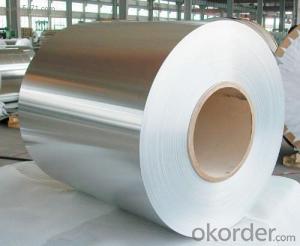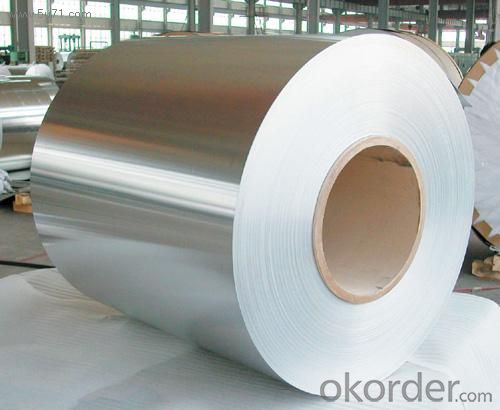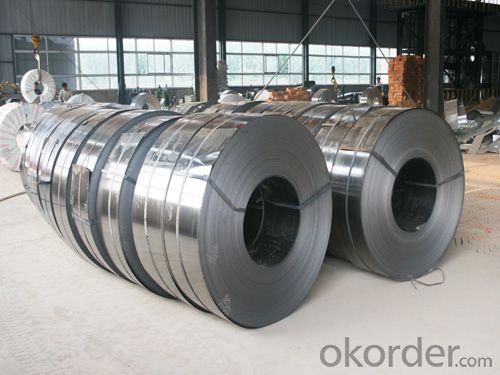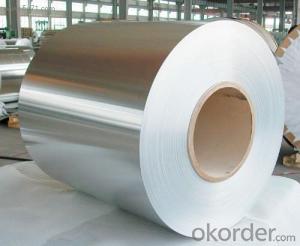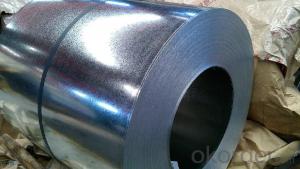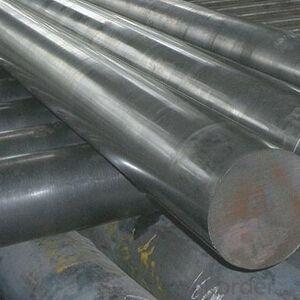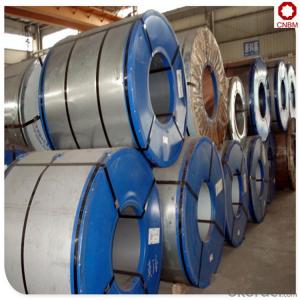Hot-dip Zinc Coating Steel Building Roof Walls DX51D+Z
- Loading Port:
- China main port
- Payment Terms:
- TT OR LC
- Min Order Qty:
- 50 m.t.
- Supply Capability:
- 10000 m.t./month
OKorder Service Pledge
OKorder Financial Service
You Might Also Like
Hot-dip Zinc Coating Steel Building Roof Walls DX51D+Z
1.Structure of Hot-dip Zinc Coating Steel Building Roof Walls DX51D+Z :
Hot-dip galvanized steel coils are available with a pure zinc coating through the hot-dip galvanizing process. It offers the economy, strength and formability of steel combined with the corrosion resistance of zinc. The hot-dip process is the process by which steel gets coated in layers of zinc to protect against rust. It is especially useful for countless outdoor and industrial applications. Production of cold formed corrugated sheets and profiles for roofing, cladding, decking, tiles, sandwich walls, rainwater protective systems, air conditioning duct as well as electrical appliances and engineering.
2.Main Features of Steel Sheet:
• Excellent process capability
• Smooth and flat surface
• Workability, durability
• Excellent anticorrosive property
3.Hot-Dip Galvanized Steel Sheet Images:

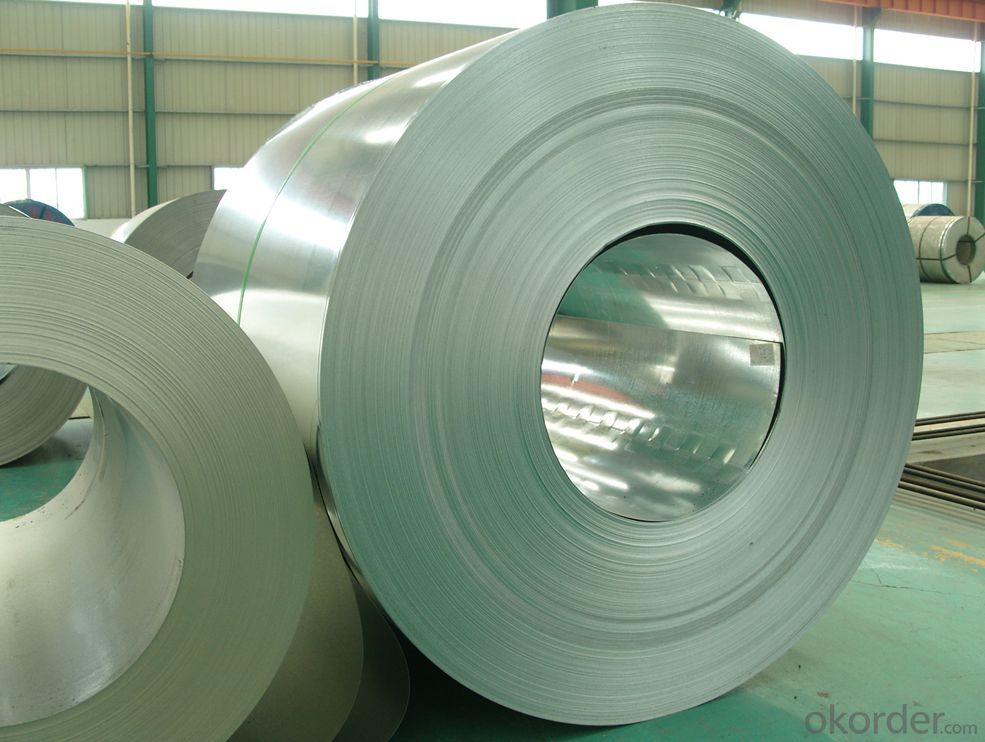
4.Hot-Dip Galvanized Steel Sheet Specification
Standard: ASTM, JIS,EN
Grade: CS, DX51D+Z,SGCC, SS 230~550,S220GD+Z~S550GD+Z, SGC340~SGC570
Thickness: 0.18mm~5mm
Width: max 2000mm
Coil weight:3-12 MT
Coil ID:508/610mm
Surface structure: zero spangle, regular spangle or minimum spangle
Surface treatment: Chromate treatment, Oiled/dry, skinpassed/non-skinpassed
5.FAQ of Hot-Dip Galvanized Steel Sheet
We have organized several common questions for our clients,may help you sincerely:
1.How to guarantee the quality of the products?
We have established the international advanced quality management system,every link from raw material to final product we have strict quality test.
2. How long can we receive the product after purchase?
Usually within thirty working days after receiving buyer’s advance payment or LC. We will arrange the factory manufacturing as soon as possible. The cargo readiness usually takes 15-30 days, but the shipment will depend on the vessel situation.
- Q: How are steel coils used in the manufacturing of pipes?
- Steel coils are used in the manufacturing of pipes by being uncoiled and fed into a pipe-making machine. The steel is then shaped and welded to form a continuous pipe, which is cut and shaped to the desired length and diameter.
- Q: many sword sellers sell swords made of 440 and stainless, i know those are both totally **** for real swords. so are 1045, 1060, or 1095 good grades of steel for a sword?
- You'll okorder has a great introductory articles on metallurgy as it pertains to swords. Check 'em out.
- Q: an 18k steel and gold, screw style bracelet how much would it be worth?
- If you use a Gold Calculator you can find out how much it is worth.
- Q: steel strutural
- IS-2062-92 STEEL IS FOR GENERAL STRUCTURAL PURPOSES. Fe410 is the specification of IS2062-1999. For properties and for more , please click: stainless-steel.in/productspeci3....
- Q: How are steel coils used in the manufacturing of metal furniture?
- Steel coils are an essential component in the manufacturing of metal furniture. These coils are typically made from high-quality steel, which provides strength, durability, and stability to the furniture. The first step in using steel coils in the manufacturing process is to cut them into the desired length and width. This is done using specialized machinery and tools, ensuring precise and accurate dimensions for the furniture components. Once the coils are cut, they are then shaped and formed into various furniture parts such as chair frames, table bases, or cabinet structures. The coils can be bent, welded, or manipulated to create the desired shapes and designs. After the shaping process, the steel coils are further processed to enhance their aesthetic appeal and protection against corrosion. This involves sanding, polishing, and applying protective coatings or finishes to give the furniture a smooth and attractive surface. In addition to providing structural support and visual appeal, steel coils also contribute to the overall functionality of metal furniture. They offer excellent load-bearing capacity, ensuring that the furniture can withstand weight and pressure without bending or breaking. Moreover, steel coils make metal furniture more resistant to wear and tear, making it suitable for both indoor and outdoor use. They can withstand harsh weather conditions, making them ideal for patio furniture or outdoor seating arrangements. Overall, steel coils are indispensable in the manufacturing of metal furniture, playing a crucial role in providing strength, durability, and aesthetic appeal. Their versatility and reliability make them a preferred choice for furniture manufacturers worldwide.
- Q: How are steel coils used in the production of electrical transmission poles?
- Steel coils are an essential component in the production of electrical transmission poles. These coils are made from high-quality steel and are used to fabricate the poles with the necessary strength and durability to withstand the demanding conditions of electrical transmission. Firstly, steel coils are used to manufacture the main body of the transmission poles. The coils are unrolled and shaped into large cylindrical sections, which are then welded together to form the pole's structure. This process allows for the creation of poles in various lengths, diameters, and wall thicknesses, catering to specific transmission requirements. The use of steel coils ensures that the transmission poles have the necessary structural integrity to support heavy electrical conductors and withstand environmental factors such as wind, ice, and seismic activities. Steel is known for its high strength-to-weight ratio, making it an ideal material for these poles, as it provides the required strength while keeping the pole relatively lightweight. Moreover, steel coils are also used to fabricate the flanges and brackets that are attached to the poles. These components are essential for securing and supporting the electrical conductors and insulators on the poles. By using steel coils, these flanges and brackets can be manufactured with precise dimensions and strength, ensuring a secure and reliable connection between the electrical components and the transmission poles. In addition to their structural benefits, steel coils also offer excellent corrosion resistance. This is crucial in the production of electrical transmission poles, as they are often exposed to harsh weather conditions and corrosive environments. Steel coils are typically coated with protective layers such as zinc or epoxy to prevent rust and corrosion, enhancing the lifespan of the transmission poles. In conclusion, steel coils play a vital role in the production of electrical transmission poles. They are used to fabricate the main body of the poles, as well as the flanges and brackets that secure the electrical components. With their high strength, durability, and corrosion resistance, steel coils ensure that transmission poles can safely and reliably support electrical conductors for the efficient transmission of electricity.
- Q: Are Steel Building Kits really helpful while erecting a steel building?
- I put up a 30'x40' Mueller Steel Building from a bolt together kit 6 yrs ago. Fully insulated, 2 10'x10' roll up doors, 1 walk thru door, 3 windows, 2' overhang all around, and gutters. The building price minus the slab was about $9500. The only special equipment was a neighbor's large Farmall with a hay spike on the FEL that we used to lift the trusses in place. Then it was mainly cordless drills to put in LOTS of self tapping screws, circular saw with metal cutting blade, tall ladders, etc. Had help putting up the trusses and putting up the roof panels. Everything else I did by myself. Took about 6 wks, but that was only working weekends and maybe 3 evenings a week since that land is 30 miles from my house. Would have gone a lot faster with at least one helper.
- Q: I am building a steel type competative team. my team so far isempolem, skarmory , Metagross, magnezone, lucario, ferrothorn.
- I'd say add Excadrill to the team. He's got pretty decent stats and a nice learnset. Otherwise Probopass works pretty well
- Q: Corten steel tends to overheat in hot environments? (for example copper heats up under the sun)
- Bill summed it up pretty quick and provided a link. For some reason you are focusing on the copper content when it really is insignificant in the overall picture of the sun hitting its surface. If you could elaborate more, maybe we could offer a better answer.
- Q: What are the different types of steel coil edge treatments?
- There are several different types of steel coil edge treatments, including mill edge, slit edge, deburred edge, and rounded edge. Mill edge refers to the original edge of the steel coil as it comes from the mill, which is typically sharp and uneven. Slit edge is a straight and smooth edge created by slitting the coil. Deburred edge is a process of removing any burrs or sharp edges from the coil edge to provide a smoother finish. Rounded edge is a type of edge treatment where the sharp corners of the coil are rounded off to reduce the risk of injury and improve handling.
Send your message to us
Hot-dip Zinc Coating Steel Building Roof Walls DX51D+Z
- Loading Port:
- China main port
- Payment Terms:
- TT OR LC
- Min Order Qty:
- 50 m.t.
- Supply Capability:
- 10000 m.t./month
OKorder Service Pledge
OKorder Financial Service
Similar products
Hot products
Hot Searches
Related keywords
